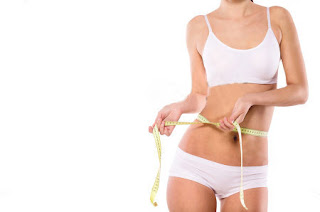I’ve seen many weightlifting beginners who, when doing
squats or deadlifts, load the bar with heavy weights without wearing any
weightlifting belt for support. That could smell disaster because you might
injure your spine. And that’s not good. So the question is should you wear one?
Answer is yes especially if you’re doing some heavy squats, deadlifts and back
exercises.
Weightlifting belt acts as support to prevent injury while
you are lifting heavier weight. However, an assumption that it acts as support
to help you lift heavier weights than natural strength alone is just a myth and
it will not allow you to lift more weights.
But before we head on about belts, let’s take emphasis on
breathing first because it’s an integral part of training. We need to
understand body mechanics like when you’re doing exercises like squats and
deadlifts and presses on heavy weights.
Your torso or core is soft and flexible that allows you to
bend on each sides or forwards and backwards and twist with ease. When you have
loads of heavy weights on your shoulders for a squat, you would want your core
to be hard so you will need to brace it. By bracing yourself, you take a big
breath, hold it while simultaneously flexing your core muscles, push or pull
and exhaling after finishing the movement. This is our instinctive response
whenever we move something heavy like a couch, a fridge, a huge cabinet or a
car.
This technique is known as Valsalva Maneuver, the hold
breath and torso tightening dynamic, when we’re doing certain exercises for
near-maximum effort. When we hold our breath and tighten those core muscles, we
get rigid torso and this allows you to lift more weight. The maneuver helps
create abdominal pressure and supports the spine.
Weightlifting belt itself doesn’t provide support directly to
your back as if it’s like an exoskeleton that makes your back stronger
instantly when you wear it. What the belt provides is it acts like a second set
of abdominals to prepare your body to lift heavier things for that pushback. Instead
of directly supporting the core, the belt indirectly supports by supplying
feedback to your core to tighten and make it rigid. The belt then helps
increase your lifting efficiency and get more stability.
What belt should you
use?
A proper weightlifting belt has the same width all around
the waist. Most common are 4” wide, but this size has a drawback to people with
average and shorter torso length because it gets uncomfortable when doing
deadlifts as it is liable to dig the ribs and hips. Finding a 3” belt is
recommended if that’s the case as it provides comfortability and gives
sufficient core feedback. The material should be firm and thick to give your
core more to push against, probably leather or suede or something that will not
stretch because it is more durable and stronger which can last to a lifetime.
The nylon-made belts are not as durable as the leather. Go with a prong buckle
or lever closure device. Single prongs are easier to wear though compared to
double-prong belts. Lever closures meanwhile will take you into halt when
putting it on and taking it off because you have to unscrew the lever, adjust
then screw again. The Velcro-type belts don’t last long and sometimes it won’t
stay together which could give you mediocre lift if you’re tensing your core.
Belts with big padded back strap in the back small-in-front
design is not recommended because it doesn’t give uniform feedback to your core
and could get in the way of lumbar extension which make it hard for your lower
back set in correct position that can result to lesser lift efficiency and
might injure lower back.
When do you need to
wear a belt?
Wear weightlifting belt only when needed. It’s not a fashion
statement wherein you can wear it all the time in the gym or whenever you’ll
workout. You will only use it if you’re lifting heavy weights on your spine. These
exercises include squats, deadlifts, strict presses and various Olympic lifts.
You don’t need to wear one when you’re doing sit-ups or
abdominal exercises because it’s contrary to the belt’s function. You certainly
don’t need to belt up during leg extensions, bicep curls, or bench pressing
because there’s no load on the spine.
Don’t wear a belt if you can’t lift heavy weight with good
form. Train first your strength and as you progress, like if you can already
squat your bodyweight in good form, that’s the time to wear one. Also if you
can’t stabilize your body without a belt, don’t wear it. When you’re not
bracing your core, chances are you’re not stabilizing your body for heavier weights
and you may end up using it as a crutch if you put it on which has a big chance
of getting injured if you try to lift same weight without it. If you have
health issues like high blood pressure, you should not wear a belt and don’t do
the Valsava maneuver. Doing so will further raise your blood pressure.
Wear it properly
Wear the belt directly over your navel so you will get
comfortable during lifts. Also properly tighten it, don’t make it loose or too
light. When putting it on, inhale normally then pull the belt as tight as
possible without interfering your breathing. A belt too tight will work against
your favor so wear it just tight enough.




